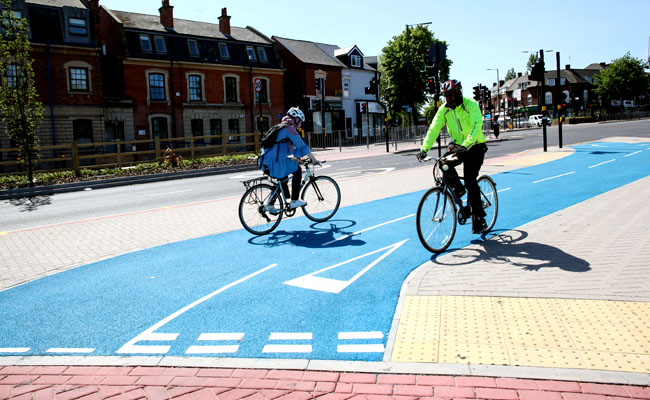Birmingham: We need to urgently and drastically reduce the carbon emissions from transport if we are to reach our net zero goal by 2030 and make the city a great and healthy place to work, live and visit.
Today’s Birmingham Transport Summit gathers our partners and stakeholders to look at how we are delivering these objectives through the Birmingham Transport Plan and how we can continue to work together, as well as learn from other areas. The Birmingham Transport Plan in turn supports Our Future City Plan, promoting economic, social and environmental sustainability.
Cllr Liz Clements, cabinet member for transport at Birmingham City Council, said: “Birmingham is a fantastic place to live, work and visit but we need people to use sustainable modes of transport when travelling – public transport, walking and cycling. In short, we need far fewer cars on the road.
“As a city we have been far too reliant on private cars for far too long and we need to fundamentally change the way we move people and goods around the city.
“We must re–allocate road space so that pedestrians, buses and bikes are prioritised and drastically reduce the number of journeys people make by car. We already have strong foundations to build on, so we can achieve our ambitious net zero carbon emissions target and have a cleaner, greener and healthier city.”
Today’s summit will outline how the principles and ambition of the Birmingham Transport Plan will be delivered.
Carrying forward with the same level of ambition and the same pace does not get us anywhere near achieving our objectives; further and faster work is needed to reduce travel demand and deliver a significant shift to sustainable modes of transport. This is why we are committing to four ambitious targets by 2030:
- Introducing low traffic conditions in 1/3 of our wards by 2030
- Introducing a new parking regime across all public parking
- Eliminating the traffic routing through the city centre
- Reducing by 1/3 the road space that is allocated to private vehicles and allocating it to sustainable modes.
To achieve these targets the interventions proposed in this delivery plan will follow a consistent approach for different types of areas in our city.
In the city’s neighbourhoods we will reduce the speed, volume and dominance of vehicular traffic to create “Places for People”, where residents can use active travel to access local services or to connect with the transit network for longer onward journeys.
We will deliver a largely traffic-free city centre, with calm and safe streets for pedestrians and cyclists, fully in line with Our Future City Plan. We will achieve this transformation through changing how vehicular traffic moves in and around the city centre, and where parking is available.
In our local centres we will enhance sustainable transport connections, manage the availability of parking spaces, and introduce multi-purpose mobility hubs.
Along the city’s main corridors we will give priority to sustainable modes of transport, with fast, reliable and safe links across the city and beyond. We will do this by taking a corridor-based approach, which reimagines whole routes, moving away from piecemeal mode-based interventions.
However, our ambitious targets can only be achieved if broader changes take place. These include addressing alignment across council policy agendas, leading by example, working in partnership with other government levels, lobbying the central government for more ambition and support and exploring ways to fund our interventions and secure self-sufficiency. Crucially, we understand that our ambition cannot be delivered without the support of the public and ensuring a fair approach and genuine participation, deliberation and co-creation amongst all citizen groups.
